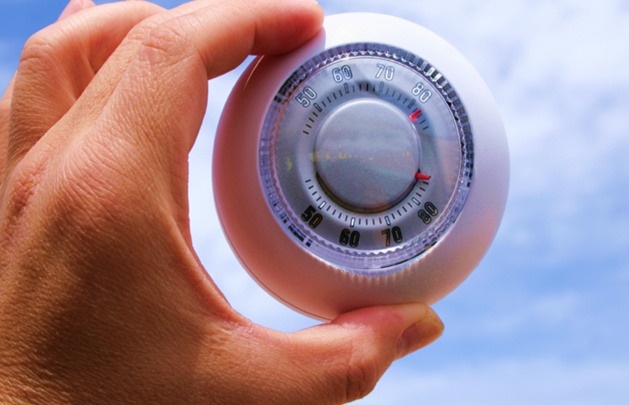As the heat of the summer melts away into the cool autumn breeze, air conditioning can seem more like a luxury than a necessity. Yet demand for cool, dry air is on the increase and it’s not just because of global warming. The U.S. uses approximately 185 billion kilowatt-hours of energy every year on domestic cooling. That’s more than any other nation in the world. Air conditioner sales worldwide have grown by around 20 percent every year, with the newly prosperous China and India leading the way.
With that in mind, the question we need to be asking ourselves is: How can we beat the heat without burning fossil fuels to power our air conditioners and thereby increasing the heat with global warming?
Standard air conditioning systems use refrigerants like chlorofluorocarbons to absorb the heat from our rooms to then be cooled. The heat is then expelled to the outdoors. This requires electrically powered pumps and compressors. One way to conserve energy is to replace coolant fluids and gases—which are often super-powered greenhouse gases able to trap more than 1,000 times more heat than CO2—with solid materials, such as bismuth telluride. A new device from Sheetak, developed partly with ARPA-E funding, uses electricity to change a thermoelectric solid to absorb heat, and could lead to cheaper air-conditioners or refrigerators. Such refrigerators, which lack moving parts and are therefore less likely to break down, can be lifesavers in remote, rural areas for keeping medicines cool or food fresh.

Another approach is to use specialty membranes to cool air by condensing water. These technologies are being developed by companies such as ADMA and Dais Analytic Corp. Such systems, after initial funding through ARPA-E, have now acquired backing from the U.S. Navy, which requires efficient air-conditioners and dehumidifiers for both troops and equipment in hotspots such as Iraq and Afghanistan. A 30 percent improvement in efficiency means 30 percent less fuel to drag to the front. The Navy program aims for units that use 20 to 50 percent less fuel. The cost savings are important to them, but it’s the convoys, the life-saving, that made them get involved.
Once such membrane technologies are developed with military funding, then they may become more cost-effective for the big cooling systems used in commercial buildings and eventually offices and homes. As a result, after a two-year push, ARPA-E is no longer funding air-conditioner efforts, not even the more radical technical innovations that still require further research and development, such as cooling with sound waves or magnets. However, they do say it’s an important area that they’d not be surprised to come back to in the future.
More efficient air-conditioners can provide cooling that could prove vital for people trying to adapt to more extreme heat waves in the future, whether in the U.S. or India. In the meantime, even the ARPA-E office building near Washington, D.C., works hard to cool its inhabitants efficiently, instead often making the building too cold. They say, “We’re the energy efficiency people and we’ve got lights that automatically turn on and off but we struggle like any other building with heating and cooling. We’ll be very grateful when these things are available and we can retrofit easily.”
So how long will it be before these technologies are available across the board? I own a small office building with air conditioning in Northampton. I’d not be without the air conditioning for the sake of my workers through the summer months, but I’m an ecologically aware individual and if an alternative was available to me I’d certainly take it. I contacted my local provider to discuss options with them and was pleasantly surprised to learn that whilst these technologies aren’t currently available, they knew all about them, were excited by them and expected them to be entering the UK Market as early as 2018!

